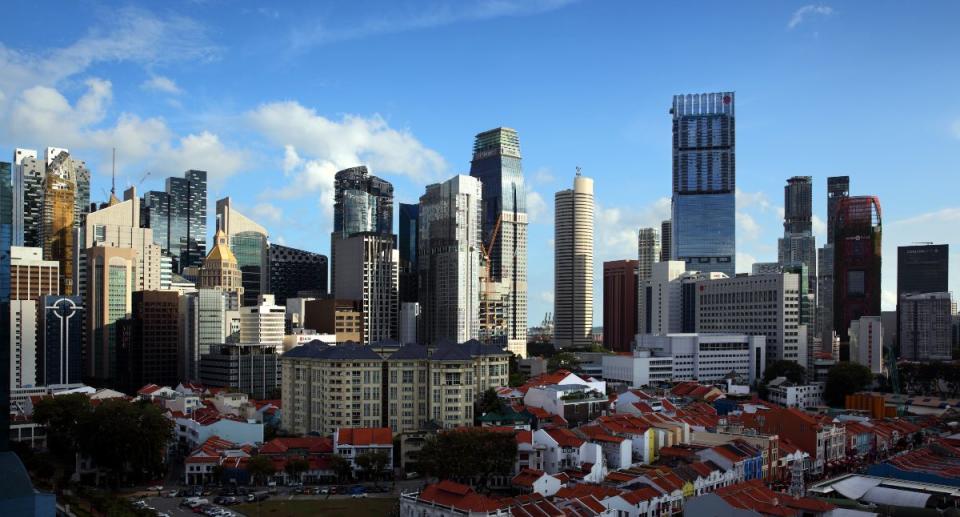Singapore’s USD millionaires to grow by over 10% in the next five years: UBS

The number of US dollar millionaires in Singapore stands at 333,204 as of 2023, expected to expand to 375,725 by 2028.
The number of US dollar millionaires in Singapore is expected to grow by slightly over 10% in the next five years — equivalent to an increase of about 42,000 people — according to the findings of UBS Global Wealth Report 2024.
In 2023, the number of US dollar millionaires in Singapore stood at 333,204. In 2028, this figure is expected to expand to 375,725.
Globally, Taiwan is set to have the highest expected growth rate in US dollar millionaires, growing by almost half (47%) to 788,799 individuals in 2028. Paul Donovan, chief economist at UBS Global Wealth attributes this to the wealth outflow from China into locations such as Taiwan and Singapore.
“We're all very familiar with the stories about the number of family offices set up in Singapore — Taiwan has also been a beneficiary of this,” he says, adding that Singapore and Taiwan benefit from not only having natural indigenous wealth growth, but also in attracting international capital.
In its fifteenth edition, the global wealth report, which provides insights into household wealth on a worldwide scale, found strong growth in Singapore’s average wealth since 2008. This is in contrast with stagnation of median wealth levels.
Average wealth per adult in Singapore grew by 3.8% in 2023. However, this shrinks to less than 2% when measured in local currency.
Since the 2008 global financial crisis, however, Singapore’s average wealth per adult has more than doubled, rising by over 116% in local currency.
To this end, Singapore lands itself in eighth position on the list for average wealth per adult globally, which is topped by Switzerland, followed by Luxembourg, Hong Kong and the US.
Median wealth per adult in Singapore, on the other hand, has fallen slightly over the same period. This reflects a divergence experienced by higher and lower wealth brackets, with most of the rise in wealth benefitting the upper income brackets.
In Singapore, financial assets make up roughly two-thirds of gross wealth per adult, which is slightly above the average for the Asia Pacific region. Share of debt is currently below 14%, roughly in line with the regional average despite being a bit higher than in Hong Kong.
Global wealth growth
Globally, the report notes growth in wealth levels across the world at 4.2%, following a rebound from the 2022 slump caused by currency effects. While growth rates varied across countries, the rebound was largely led by Europe, the Middle East and Africa (EMEA) at 4.8% and Asia Pacific at 4.4%.
Moreover, as inflation slowed, real growth exceeded nominal growth in 2023, resulting in inflation-adjusted global wealth growing by nearly 8.4%.
Over a thirty-year timespan, UBS expects wealth mobility to be even more pronounced. The chance of escaping from the lowest wealth bracket is set to rise to over 60%, and there is a one-in-three chance to move up by two or more wealth brackets, the report finds.
Additionally, people in the middle bracket have a nearly 40% chance of moving up further, while half of the people in the highest bracket will have slipped down by one notch or more.
When it comes to wealth transfer, the report expects roughly US$83 trillion to be passed on within the next 20 to 25 years. However, given that people over the age of 75 hold nearly one-fifth of the world’s overall wealth, and that the average life expectancy for 75-year olds ranges between 82 to 86 years across most of the world, a large chunk of these assets can be expected to be transferred already within the next ten years.
Asia-Pacific has over three times as many people above the age of 75 as the Americas, the report notes. It also has more than twice as many as EMEA. Therefore, UBS forecast Asia Pacific to lead in terms of instances of wealth transfer. Considering the region’s lower average wealth per adult compared to other regions, however, Asia Pacific will lag in terms of amount of wealth transferred.
In 2023, millionaires already accounted for 1.5% of the adult population analysed by UBS, with the US, Mainland China and the UK posting the highest numbers of millionaires. By 2028, the number of adults with wealth of over US$1 million will have risen in 52 of the 56 markets in the report’s sample.
See Also:
Click here to stay updated with the Latest Business & Investment News in Singapore
Family offices sacrificing liquidity for returns in a new era of strategic asset allocation: UBS
Expect 'a year of two halves' amid reopening, inflation: UBS
Get in-depth insights from our expert contributors, and dive into financial and economic trends

 Yahoo Finance
Yahoo Finance 